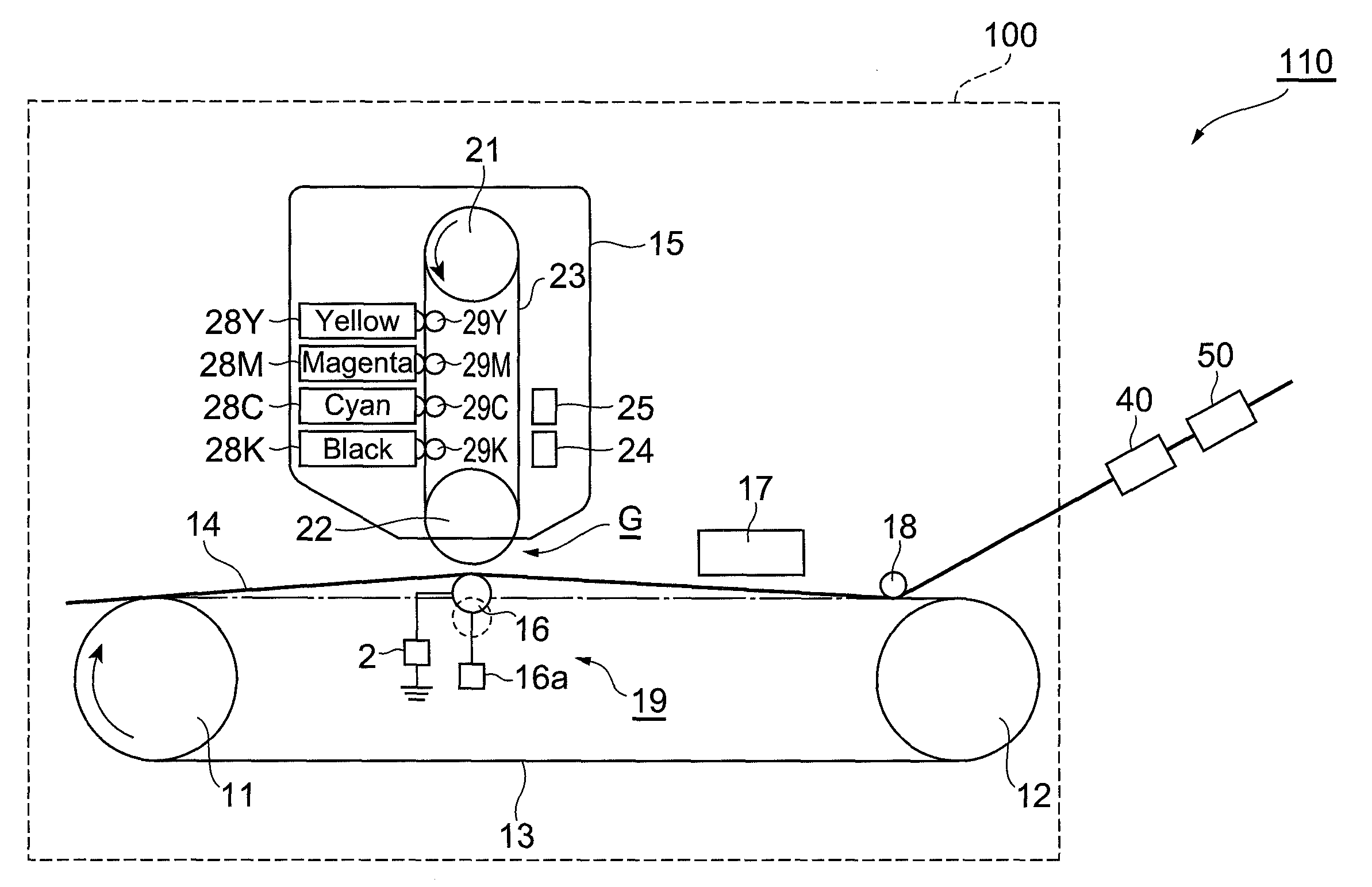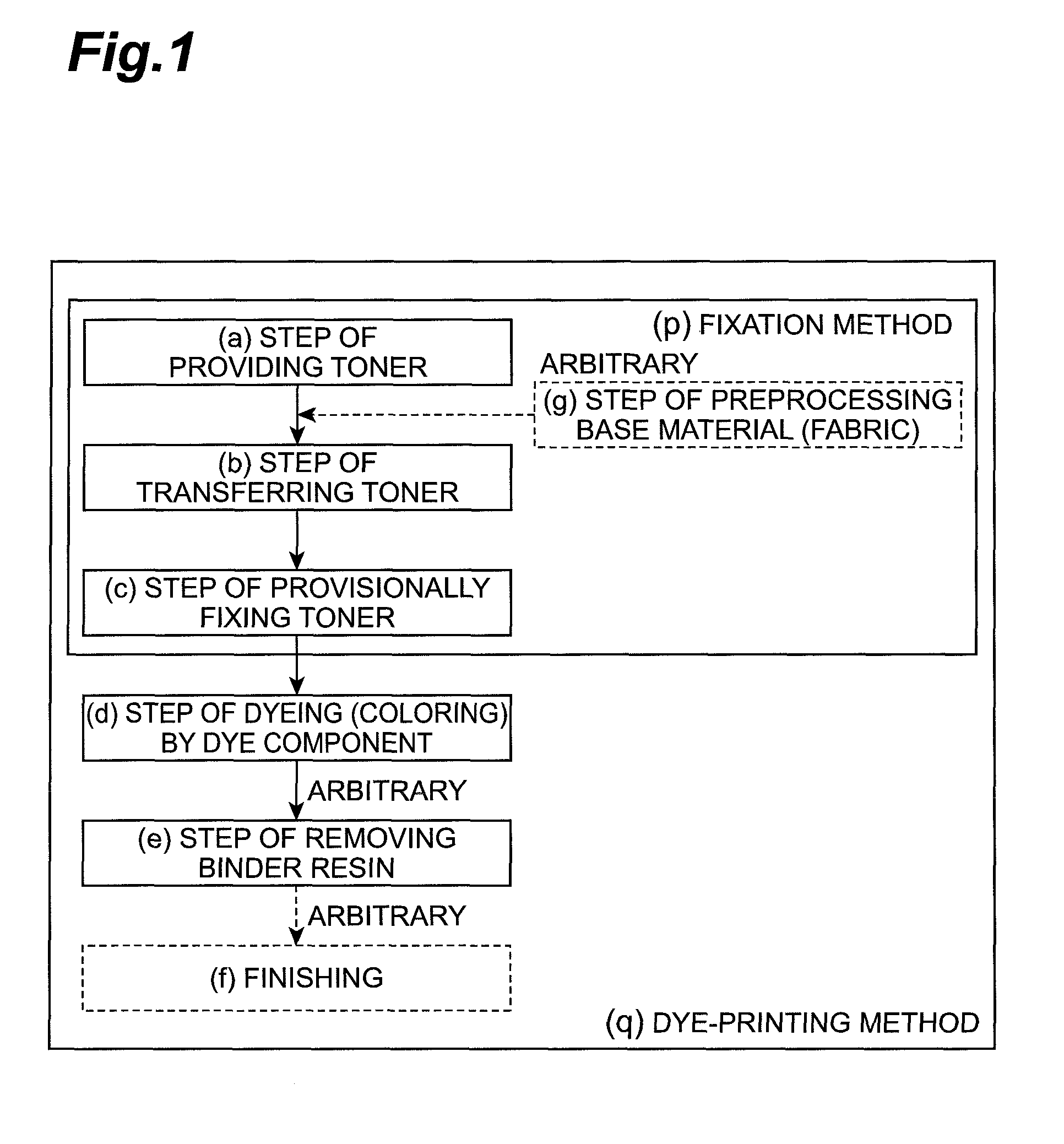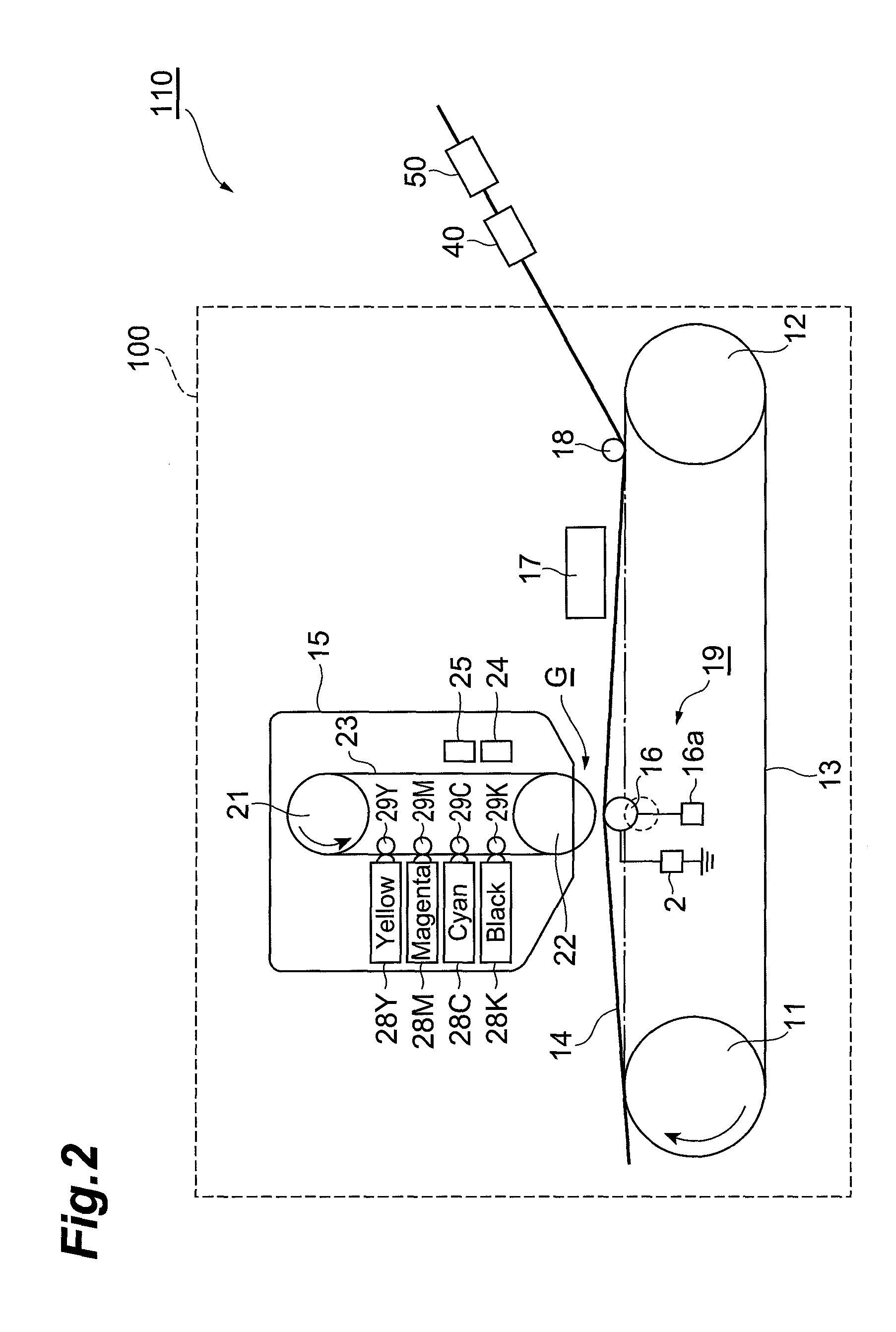Apparatus and methods for electrostatically producing dye-printed material
a technology of electrostatic production and printed materials, which is applied in the direction of dyeing process, electrographic process, instruments, etc., can solve the problems of poor transfer effect of liquid toner in methods using liquid toner, insufficient clarity, and difficulty in transferring toner to the recessed sections, etc., and achieves high image transfer
- Summary
- Abstract
- Description
- Claims
- Application Information
AI Technical Summary
Benefits of technology
Problems solved by technology
Method used
Image
Examples
first embodiment
[0056]FIG. 1 is a diagram schematically showing a process chart for explaining an example of working steps for carrying out a method (p) for producing a printed material and a method (q) for producing a dye-printed material according to the embodiments of the present invention.
[0057]As shown in FIG. 1, in the present embodiment, the method (p) for producing a printed material includes a step (a) of electrostatically providing dry toner particles to a charged body, a step (b) of electrostatically transferring a dry toner from the charged body to a base material, and a step (c) of provisionally fixing the dry toner particles transferred to the base material to the base material. As a result, a base material including the toner particles fixed to the base material (hereinafter, may be called “printed material” (fixed material)) can be obtained. In addition, the method (q) for producing a dye-printed material in the present embodiment further includes a step (d) of dyeing the base mater...
second embodiment
[0124]Next, a printing apparatus 200 and a dye-printing system 220 according to a second embodiment will be described with reference to FIG. 9. The printing apparatus 200 of FIG. 9 can also perform printing by the four-color collective transfer system. Hereinafter, only the points different from the printing apparatus 100 will be described, and the description of the same parts will not be repeated. The printing apparatus 200 includes a four-color imaging unit (electrostatic holding unit) 15A that forms an image to be transferred to the base material 14 and a transfer unit 70A.
[0125]The four-color imaging unit 15A includes pulleys 21A and 22A arranged above and below and a photoreceptor belt 23A wound between the pulleys. Between the pulleys 21A and 22A, the cleaning apparatus 24 that removes an attachment on the photoreceptor belt 23A, the electricity removal apparatus 25 that removes electricity of the photoreceptor belt 23A, a charging apparatus 26 that charges the photoreceptor ...
third embodiment
[0135]FIG. 10 is a schematic diagram showing a printing apparatus 300 and a dye-printing system 310 according to still another third embodiment of the present invention. The printing apparatus 300 of FIG. 10 can also perform dye-printing by the four-color collective transfer system. Hereinafter, only the points different from the printing apparatus 100 of FIG. 2 will be described, and the description of the same parts will not be repeated. In the printing apparatus 300, monochromatic imaging units (electrostatic holding units) 15YB, 15MB, 15CB, and 15KB that form monochromatic images of yellow, magenta, cyan, and black are arranged in tandem on the conveying belt 13.
[0136]For example, the monochromatic imaging unit 15YB includes pulleys 21B and 22B arranged above and below and a photoreceptor belt (charged body) 23B wound between the pulleys. Between the pulleys 21B and 22B, a cleaning apparatus 24B that removes an attachment on the photoreceptor belt 23B, an electricity removal app...
PUM
| Property | Measurement | Unit |
|---|---|---|
| temperature | aaaaa | aaaaa |
| particle size | aaaaa | aaaaa |
| thickness | aaaaa | aaaaa |
Abstract
Description
Claims
Application Information
 Login to View More
Login to View More - R&D
- Intellectual Property
- Life Sciences
- Materials
- Tech Scout
- Unparalleled Data Quality
- Higher Quality Content
- 60% Fewer Hallucinations
Browse by: Latest US Patents, China's latest patents, Technical Efficacy Thesaurus, Application Domain, Technology Topic, Popular Technical Reports.
© 2025 PatSnap. All rights reserved.Legal|Privacy policy|Modern Slavery Act Transparency Statement|Sitemap|About US| Contact US: help@patsnap.com



